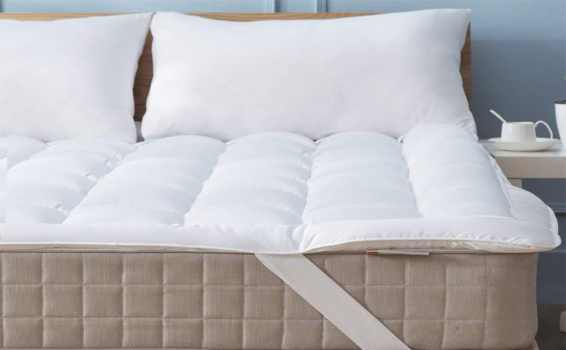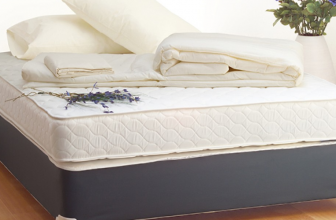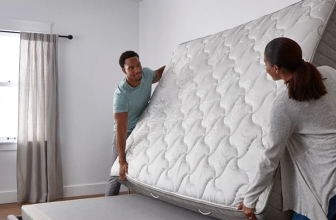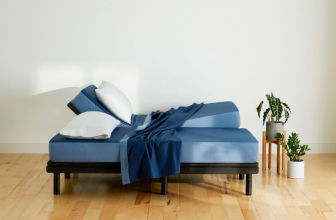Brief: How To Keep Mattress Pad From Sliding
- Introduction: Mattress pads enhance bed comfort and protect mattresses. Slipping pads can cause discomfort and disrupt sleep.
- Why Mattress Pads Slide:
- Sizing Issues: Incorrect pad size leads to slipping.
- Smooth Covers: Slippery materials like cotton terry reduce grip.
- No Headboard/Footboard: Lack of anchoring points for pad stability.
- Incorrect Pad Size: Oversized or thick pads prone to shifting.
- Solutions to Prevent Sliding:
- Fitted Sheets: Elastic edges provide grip.
- Sheet Straps: Secure pads to sheets.
- Velcro Strips: Attach pads to beds.
- Non-Skid Mats: Place under pads for friction.
- Duct Tape: Temporarily secure pads.
- Safety Pins: Pin pads to mattresses or sheets.
- Additional Tips:
- Regular Cleaning: Removes dust, and improves pad grip.
- Proper Pad Selection: Choose the right size and material.
- Regular Checks: Ensure pads are correctly positioned.
- Conclusion: Keeping mattress pads in place involves correct sizing, using gripping tools, and regular maintenance for optimal bed comfort.
- FAQs:
- Ideal Mattress Pad Material? Breathable materials like cotton, and bamboo.
- Cleaning Mattress Pads? Gentle cycle, air dry.
- Mattress Pad vs. Protector? Pads for comfort, protectors for spills.
- Replacing Mattress Pads? Typically every 1-2 years.
A mattress pad is an add-on to provide added comfort and warmth to your bed while adding protection to the mattress and/or box spring. For those who sleep on their side, a thinner mattress pad can be used; but for those who sleep on their back or stomach, a thicker one is recommended in order to avoid perspiration or irritants from accumulating in the body creases.
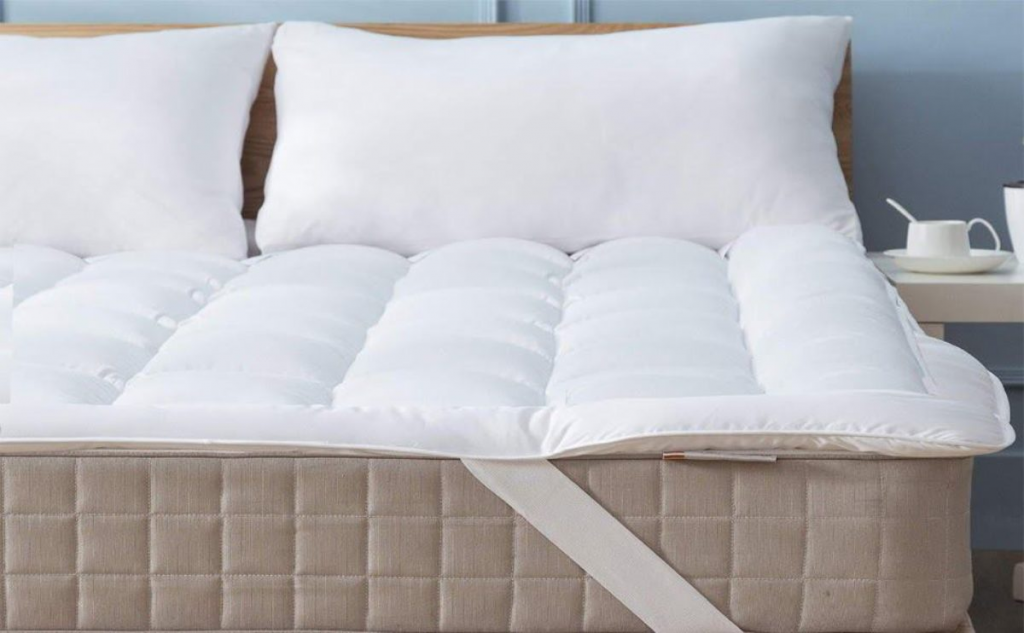
But sometimes, it happens that the mattress pad slides from your bed. It provides inconvenience and bad sleeping all night. Luckily, we have several methods on how to keep the mattress pad from sliding. But before we move forward, let’s learn why the pad slides from the mattress.
Why Do Mattress Pad Slides?
Many consumers do not know why their mattress pad is sliding. The reason why your bedding is sliding could be because of a loose bed frame, a crease in the comforter, or because your mattress pad isn’t evenly distributed enough.
For example, if you have an older bedroom set with wooden slats for the headboard and footboard, and there is excess space between the slats, your mattress pad may slide or become stretched out of position.
Smooth Mattress Cover
If your mattress pad doesn’t have any buttons, snaps, or loops to attach it to the bed, your bedding may be sliding because it is a slippery cover. If you are using a mattress pad with a cotton terry cloth top, you may want to consider changing the cover if your pad keeps slipping off. Cotton terry can be slippery due to all the fibers and loops that make up this material.
Absence Of Headboard Or Footboard
Mattress pads with a two-way zipper for removal or replacement usually have a strip of elastic at the bottom to keep it firmly in place. If you are using one of these types of mattress pads, but don’t have a footboard or headboard, the loose cover may be sliding.
Incorrect Size
If you purchase bedding that does not fit your mattress correctly, the excess fabric could be causing the bedding to slide off or off-center on your bed. If you bought a king-size bed, and the mattress pad is too large and slipping, the king-size cover could be affecting the set’s overall comfort. If you purchase a king-size mattress pad that is too small or too thick, your bedding may be slipping off because of an uneven distribution of material.
6 Ways To Keep Mattress Pad From Sliding
The following are ways to keep your mattress pad from sliding:
Use A Tight Fitted Sheet
The first and best way to keep your mattress pad from sliding is by using a fitted sheet, which is a sheet that has elastic around the top corners to prevent it from slipping off your bed. You can use fabric pillowcases also, but for those who prefer under-pillow cases, you will need something with an elasticized edge for it to snap onto when you remove and replace the cover.

Use Sheet Straps
Sheet straps are non-elasticized straps that attach to your sheets, keeping them from slipping. The sheet straps can be placed on the edge of the fitted sheet or the top sheet.

Velcro System
Another way to keep your mattress pad from sliding is by using a Velcro system. This involves placing a Velcro strip at the bottom of the mattress pad and matching it up to another one at the top edge of your fitted sheet or pillowcase (if you prefer under-pillow cases).
No staples or sewing is involved; just a few minutes with scissors and an iron.
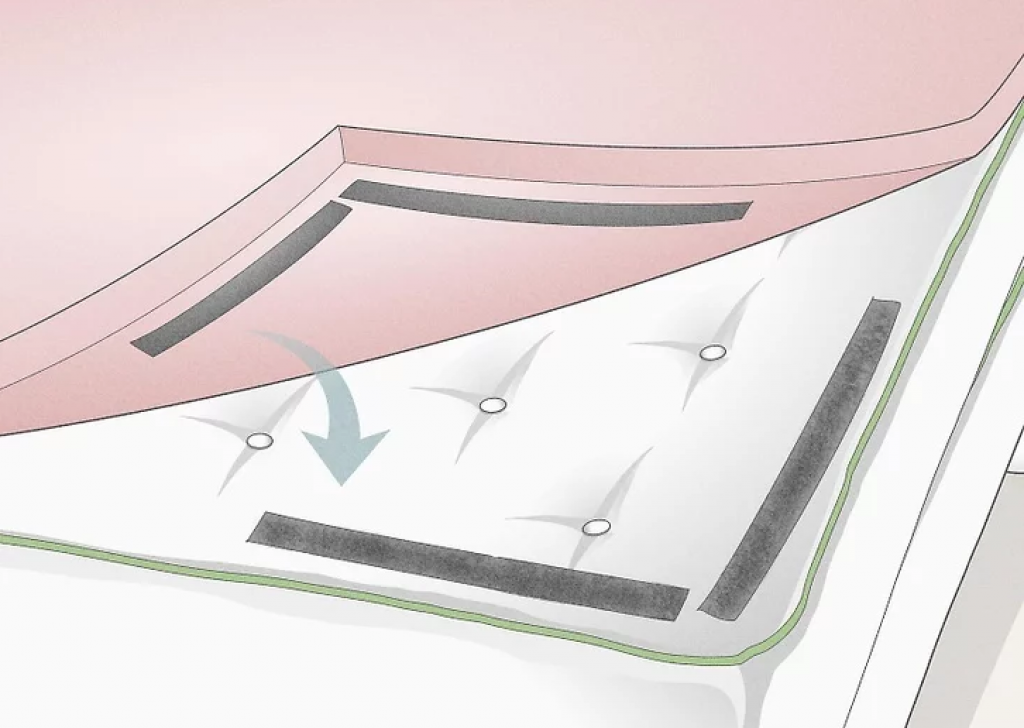
Non-Skid Mat
If you have a mattress pad that has a slick, smooth surface, you can use a non-skid mat to keep the mattress pad from sliding off your bed. The mat is applied to the bottom of the topper to prevent it from slipping on the fabric.
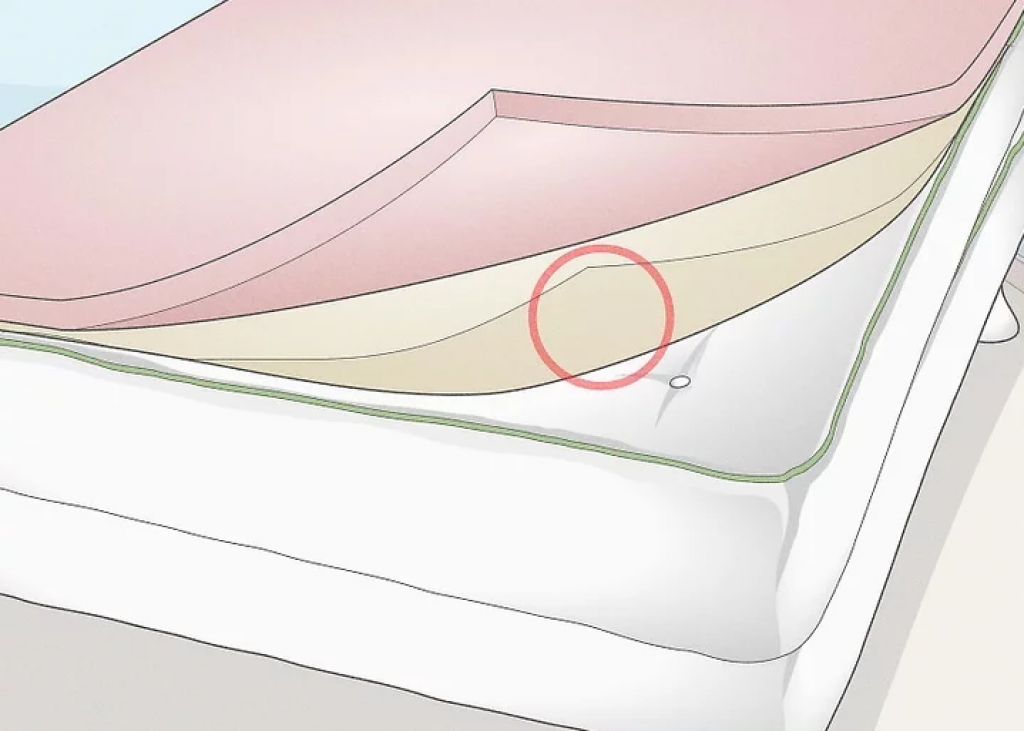
Duct Tape
You can also use duct tape to hold your mattress pad in place. While this is not the most elegant solution, it can be used temporarily or as an inexpensive alternative to other methods.
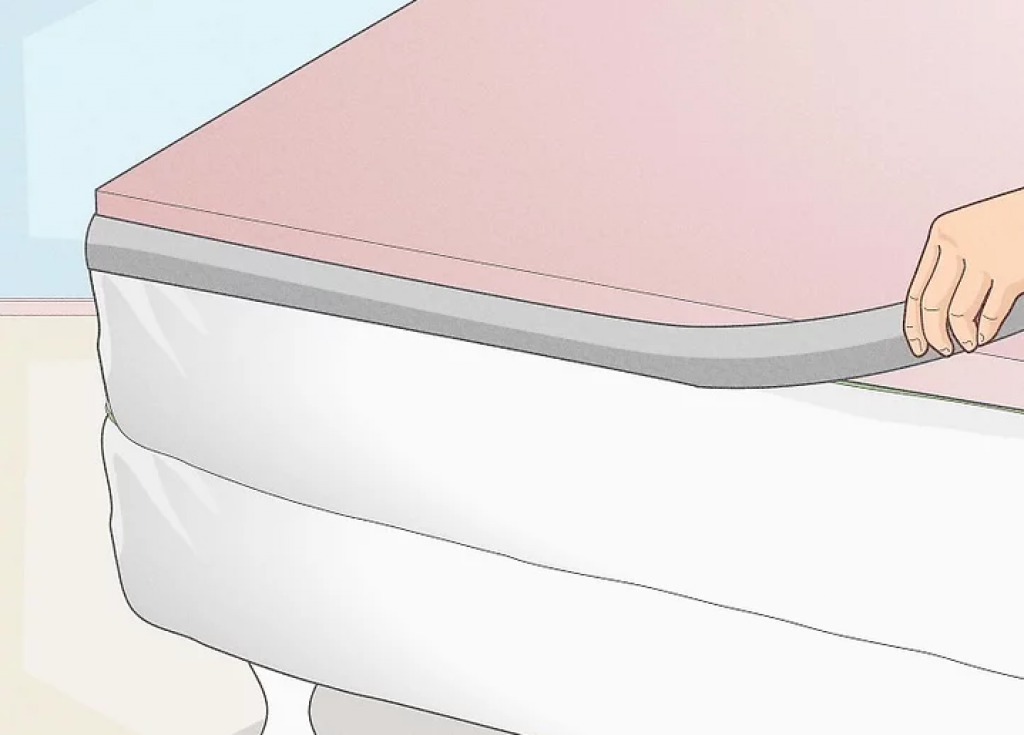
Safety Pins
Safety pins can be used to keep a loose cover in place. Place a safety pin at the inside of each corner or seam on your sheet to prevent the fabric from slipping.

FAQ
What is a mattress pad, and why is it important to keep it from sliding?
A mattress pad is a thin layer of cushioning material placed on top of a mattress for comfort and protection. Keeping the mattress pad in place is important as it provides additional support, helps keep the mattress fresh, prevents slipping and sliding, and helps protect the mattress from wear and tear.
How can I keep my mattress pad from sliding?
You can keep your mattress pad from sliding by using mattress anchors, mattress clips, non-slip strips, or mattress covers. Anchors and clips can be placed under the corner of the mattress pad to keep it in place. Non-slip strips can be applied to the bottom of the mattress pad and stick to the mattress, so it does not move. Lastly, a mattress cover can be put over the entire mattress to keep it from shifting.
Is it important to use a mattress pad on a firm mattress?
Yes, it is important to use a mattress pad on a firm mattress. A mattress pad provides cushioning and comfort while protecting the mattress from dust and allergens. It also helps keep the mattress clean, fresh, and in good condition.
What type of mattress pad is best for a firm mattress?
A mattress pad with a thin and lightweight design is ideal for a firm mattress. It should also have a grippy backing to keep it securely in place.
Does the type of material used in a mattress pad matter?
Yes, the type of material used in a mattress pad can matter. Choose a mattress pad that is made of a breathable material like cotton, bamboo, or polyester. These materials are gentle on the skin and provide a cool sleeping surface.
What is the best way to wash a mattress pad?
It is best to wash a mattress pad on a gentle cycle with cold water and mild detergent. Air drying the mattress pad is preferable as many materials used in mattress pads are not designed for the heat of a dryer.
Are there alternatives to using a mattress pad?
A mattress protector is a great alternative to using a mattress pad. A mattress protector is a thin waterproof material that is placed over the top of the mattress to protect it from dust and allergens.
Can I use a mattress topper with a firm mattress?
Yes, you can use a mattress topper with a firm mattress. A mattress topper is a thick layer of cushioning material that is placed over the top of the mattress for added comfort and support.
Does a mattress topper help keep a mattress pad from sliding?
Yes, a mattress topper can help keep a mattress pad in place by providing extra cushioning and grip.
Is it better to use a mattress protector or a mattress pad?
It depends on your needs. A mattress protector is great for protection as it is waterproof, whereas a mattress pad is better for additional cushioning and comfort.
Can I use a mattress pad and mattress protector together?
Yes, you can use a mattress pad and mattress protector together. This is a great option for providing extra protection, comfort, and support for your mattress.
How often should I replace my mattress pad?
Depending on the material and usage, your mattress pad should typically be replaced every 1-2 years.
Is it safe to put a mattress pad on a memory foam mattress?
Yes, it is safe to put a mattress pad on a memory foam mattress. Just be sure to use a mattress pad that is made of breathable material so as not to trap heat in the mattress.
Are there any special considerations when putting a mattress pad on a firm mattress?
Yes, it is important to use a mattress pad with a thin and lightweight design and a grippy backing. This will help ensure the mattress pad stays in place on the firm mattress.
What other measures can I take to keep my mattress pad from sliding?
You can also try using mattress anchors, clips, or non-slip strips to keep your mattress pad in place. These products attach to the mattress or mattress pad and help keep them from shifting.

